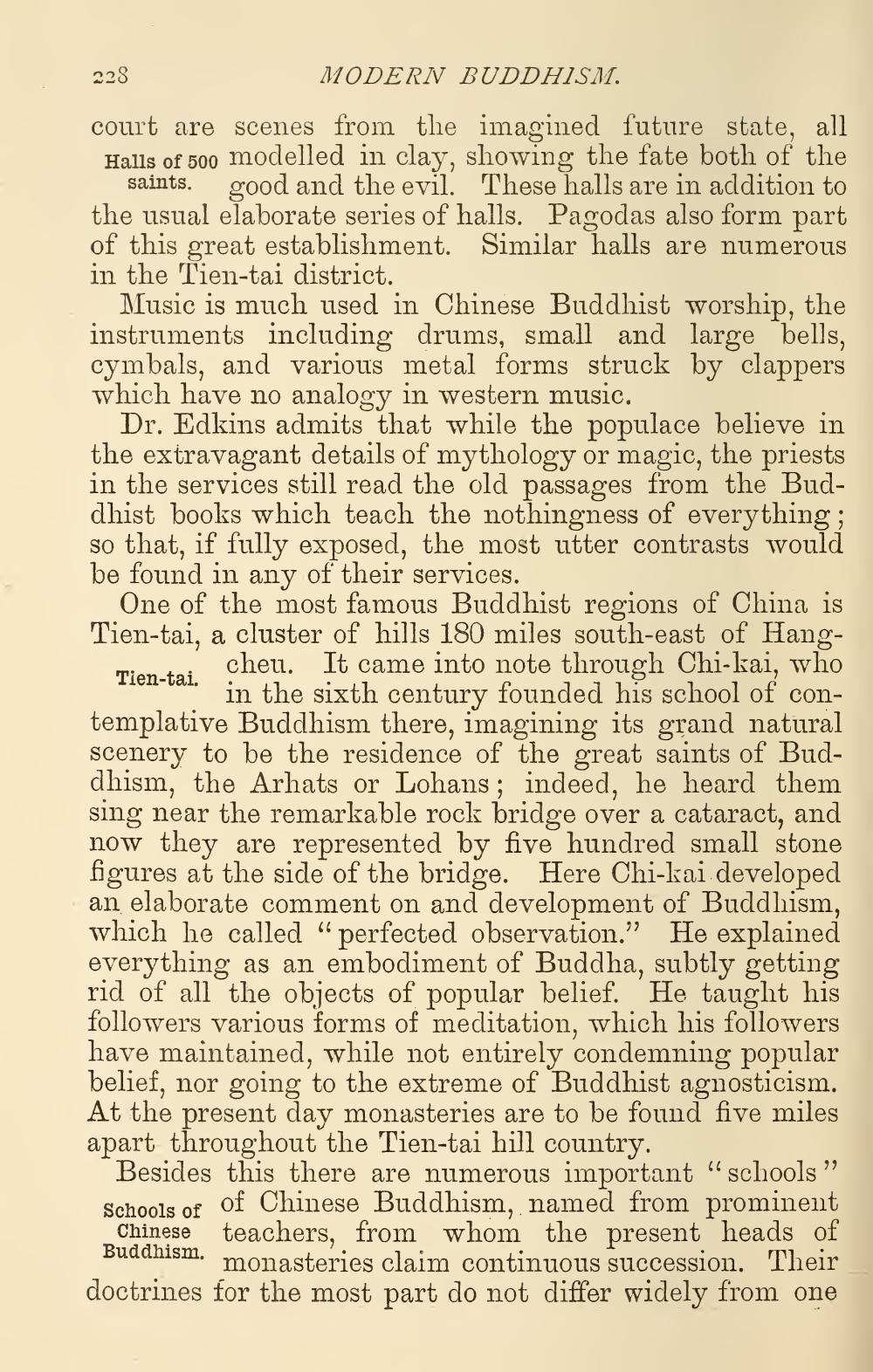________________
228
MODERN BUDDHISM. court are scenes from the imagined future state, all Halls of 500 modelled in clay, showing the fate both of the
saints. good and the evil. These halls are in addition to the usual elaborate series of halls. Pagodas also form part of this great establishment. Similar halls are numerous in the Tien-tai district.
Music is much used in Chinese Buddhist worship, the instruments including drums, small and large bells, cymbals, and various metal forms struck by clappers which have no analogy in western music.
Dr. Edkins admits that while the populace believe in the extravagant details of mythology or magic, the priests in the services still read the old passages from the Buddhist books which teach the nothingness of everything ; so that, if fully exposed, the most utter contrasts would be found in any of their services.
One of the most famous Buddhist regions of China is Tien-tai, a cluster of hills 180 miles south-east of Hang
m cheu. It came into note through Chi-kai, who Tien-tai.
vame in the sixth century founded his school of contemplative Buddhism there, imagining its grand natural scenery to be the residence of the great saints of Buddhism, the Arhats or Lohans; indeed, he heard them sing near the remarkable rock bridge over a cataract, and now they are represented by five hundred small stone figures at the side of the bridge. Here Chi-kai developed an elaborate comment on and development of Buddhism, which he called “perfected observation." He explained everything as an embodiment of Buddha, subtly getting rid of all the objects of popular belief. He taught his followers various forms of meditation, which his followers have maintained, while not entirely condemning popular belief, nor going to the extreme of Buddhist agnosticism. At the present day monasteries are to be found five miles apart throughout the Tien-tai hill country.
Besides this there are numerous important "schools” Schools of of Chinese Buddhism, named from prominent Chinese teachers, from whom the present heads of
uddhism. monasteries claim continuous succession. Their doctrines for the most part do not differ widely from one




